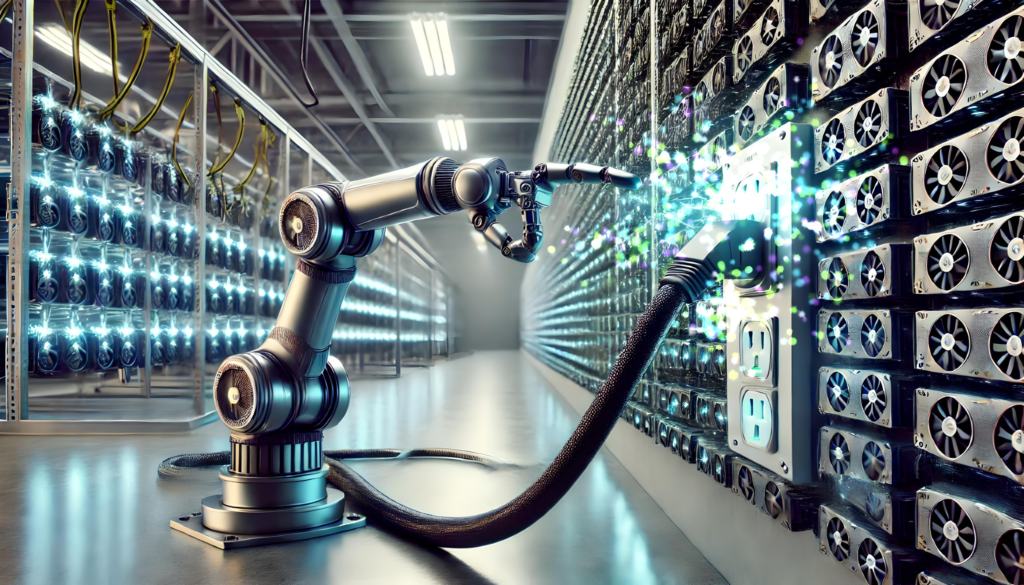The rapid growth of generative AI (GenAI) technologies is causing a major shift in how data centers store and manage massive volumes of information. From training large language models to powering AI assistants and creative tools, GenAI workloads require vast amounts of data to be processed and stored at ultra-fast speeds. As a result, traditional storage architectures are struggling to keep pace.
Now, high-density and power-efficient storage solutions are becoming essential components of modern AI infrastructure. Without these upgrades, the future scalability of GenAI applications could be at risk.
Why GenAI Is Stressing Storage Systems
GenAI applications, such as ChatGPT, Midjourney, and DALL·E, rely on massive datasets for training and inference. These datasets often contain terabytes or even petabytes of structured and unstructured data, including text, images, audio, and video.

To process this information efficiently, AI data centers require storage systems that can deliver extremely high input/output operations per second (IOPS), low latency, and robust scalability. However, traditional hard disk drives (HDDs) and outdated storage area networks (SANs) can’t meet these performance demands.
Instead, AI infrastructure must shift toward more advanced technologies like NVMe SSDs, high-capacity flash storage, and next-generation storage fabrics such as PCIe 5.0 and CXL (Compute Express Link).
For more on NVMe performance and use cases, read Western Digital’s NVMe insights.
The Push for High-Density Storage
As GenAI adoption increases across industries, the volume of data stored is growing exponentially. According to IDC, the global datasphere is projected to reach 175 zettabytes by 2025, much of which will come from AI-driven applications.
This explosive growth has led to a surge in demand for high-density storage systems that can pack more capacity into less space. In AI data centers where every square foot matters, minimizing physical footprint is as important as increasing storage speed.
Manufacturers are responding with innovations like ultra-dense flash modules and 3D NAND technology. For example, Samsung’s 176-layer V-NAND flash memory and Micron’s 232-layer NAND allow for unprecedented storage density without increasing power consumption or heat output.
More details on 3D NAND development can be found at Micron’s technology brief.
Power Efficiency Is Now a Top Priority
In addition to density, energy efficiency is another major concern. AI data centers already consume enormous amounts of power due to the demands of GPUs, CPUs, and cooling systems. Adding storage components that also drain power could push total energy consumption beyond sustainable levels.
This has sparked a trend toward low-power NVMe SSDs and AI-optimized storage controllers that reduce overhead. Startups and major players alike are also exploring computational storage, where data is processed closer to where it is stored, thus minimizing data movement and cutting down on power-hungry operations.
For example, companies like ScaleFlux and NGD Systems are developing SSDs that perform AI inference tasks directly on the drive, enabling faster insights with lower energy usage.
A deep dive into computational storage is available from TechTarget.
The Cost Factor and Sustainability Concerns
While high-performance storage technologies offer impressive speed and power advantages, they come at a higher cost than traditional solutions. Enterprises must weigh these costs against the long-term benefits of better AI performance, energy savings, and reduced physical infrastructure needs.
Moreover, with sustainability goals becoming standard across industries, data centers are under pressure to reduce carbon footprints. This adds further urgency to adopting more efficient storage solutions that align with green computing initiatives.
A helpful resource on sustainable AI practices is available from IBM Research.
Edge AI and the Role of Decentralized Storage
The rise of edge AI, where data is processed closer to the source (like smart cameras or autonomous vehicles), is also reshaping storage requirements. Edge devices need compact, durable, and fast storage with minimal power draw.

This trend is pushing developers to design edge storage modules with AI in mind—balancing endurance, thermal management, and bandwidth. Decentralized storage models, like those seen in blockchain and Web3 technologies, may also play a role in distributed AI applications where data needs to be stored and accessed dynamically across the network.
Industry Response and Market Outlook
Tech giants like Intel, AMD, NVIDIA, and storage leaders like Western Digital, Seagate, and Micron are all racing to align their products with the unique needs of GenAI workloads.
NVIDIA recently announced its AI Enterprise software suite now supports tighter integration with advanced storage arrays, improving data throughput in multi-GPU environments. Meanwhile, Intel’s Optane Persistent Memory has been gaining traction in GenAI inference workloads due to its ability to combine memory-like speed with storage persistence.
According to a recent MarketsandMarkets report, the AI storage market is expected to grow from $17.4 billion in 2023 to over $57.2 billion by 2028, at a CAGR of 26.5%.
For current market insights, view MarketsandMarkets AI Storage Report.
What Lies Ahead
To support GenAI innovation, storage architectures must evolve quickly. The focus must be on:
- Scalability to handle growing datasets
- Speed for real-time AI training and inference
- Energy efficiency to reduce operational costs and carbon emissions
- Reliability for always-on services and mission-critical AI tasks
Vendors, enterprises, and infrastructure providers must collaborate to develop a new generation of AI-native storage systems—designed from the ground up for performance, sustainability, and future growth.
As the world continues to embrace GenAI, solving storage challenges is no longer a secondary task—it’s a mission-critical priority.
Also Read – Framework’s New Modular Laptop 12 Changes Future of Tech






